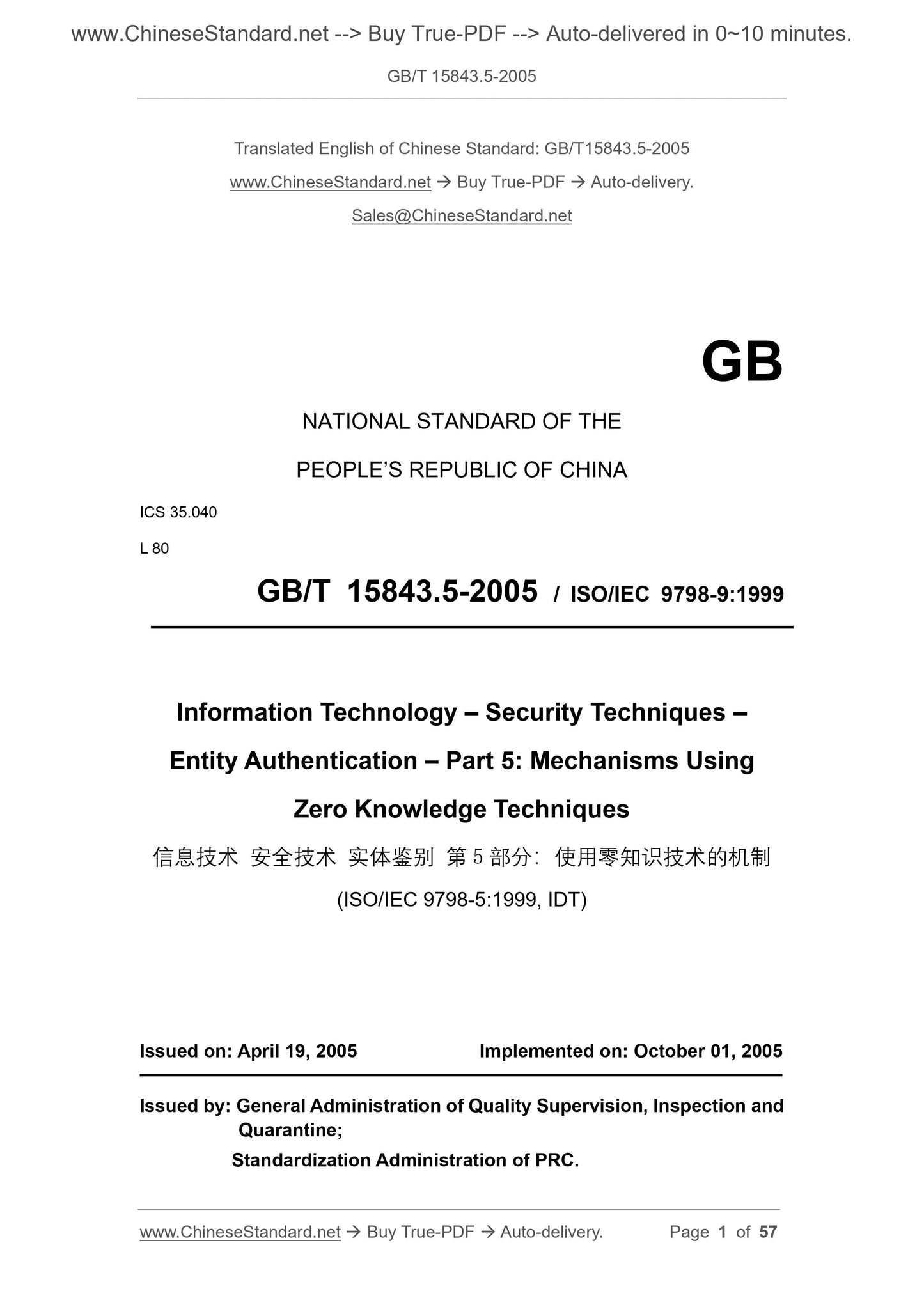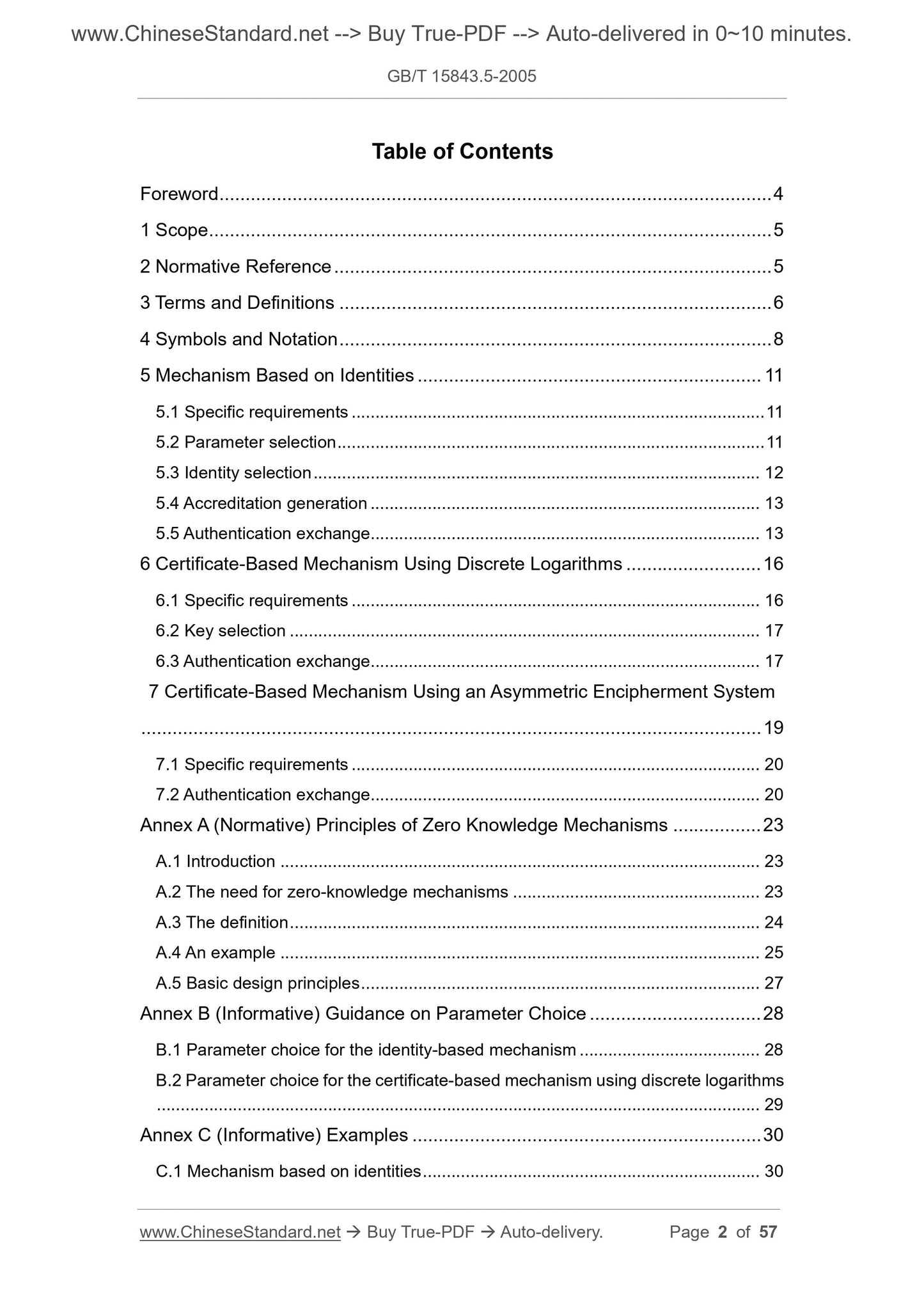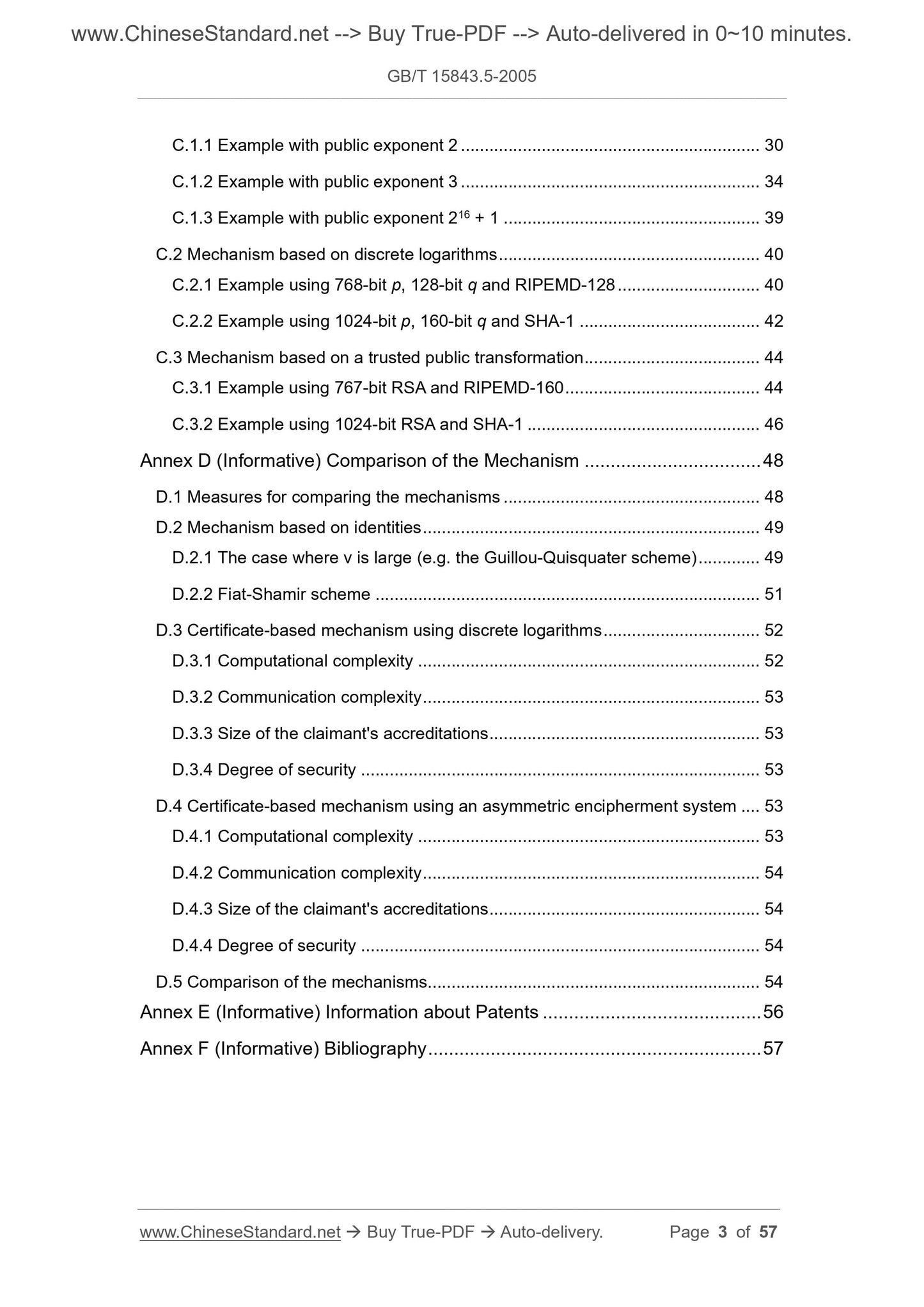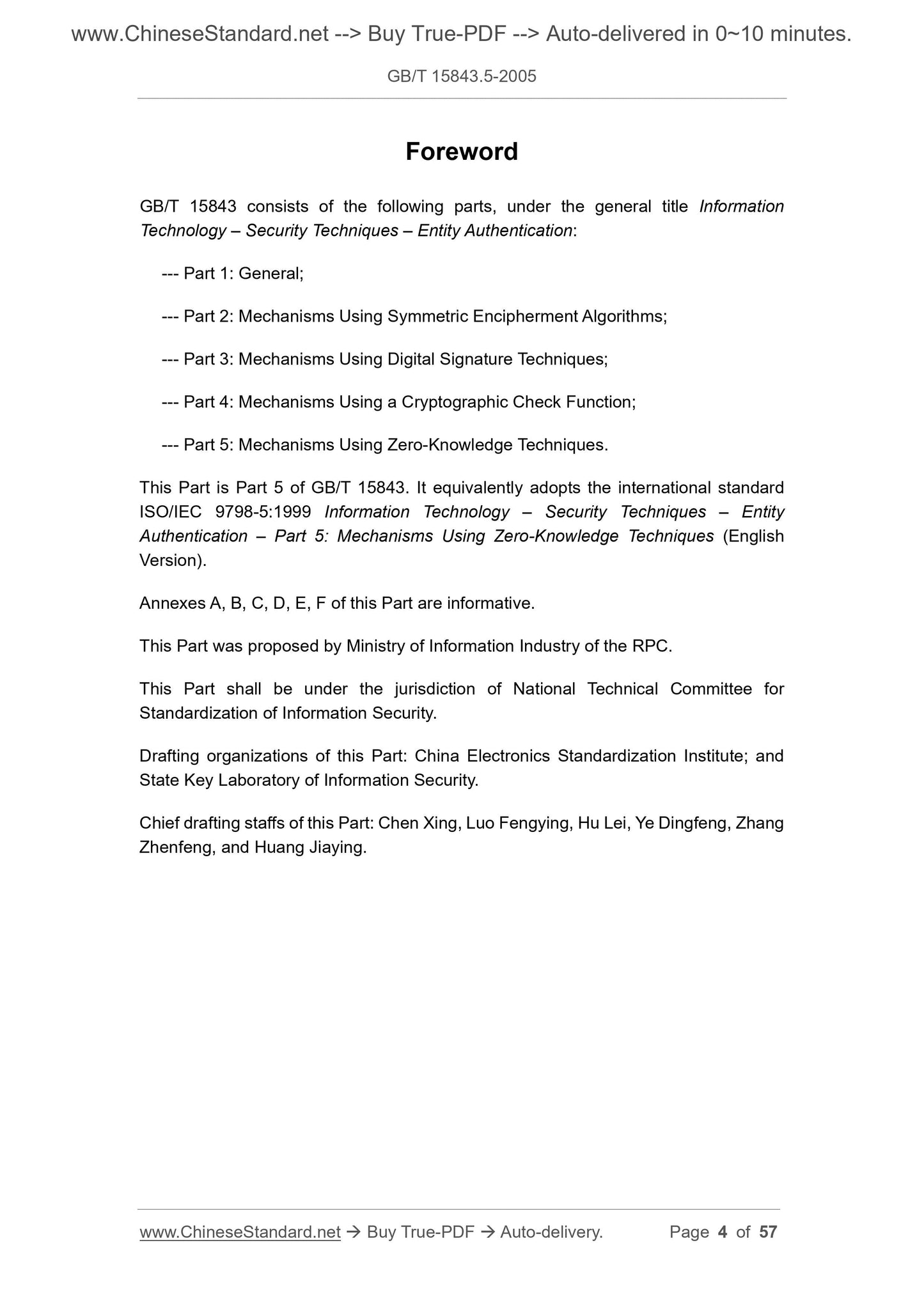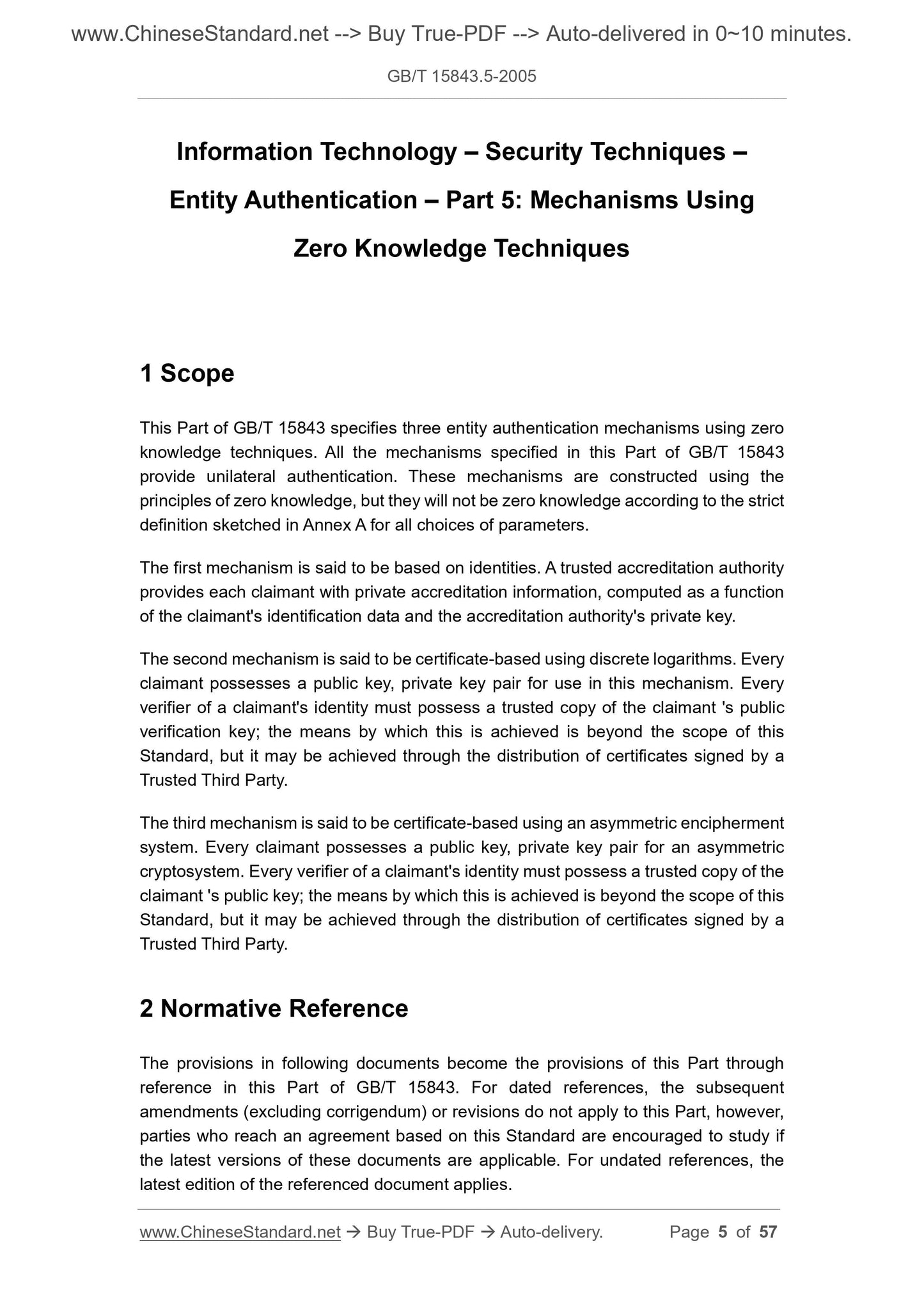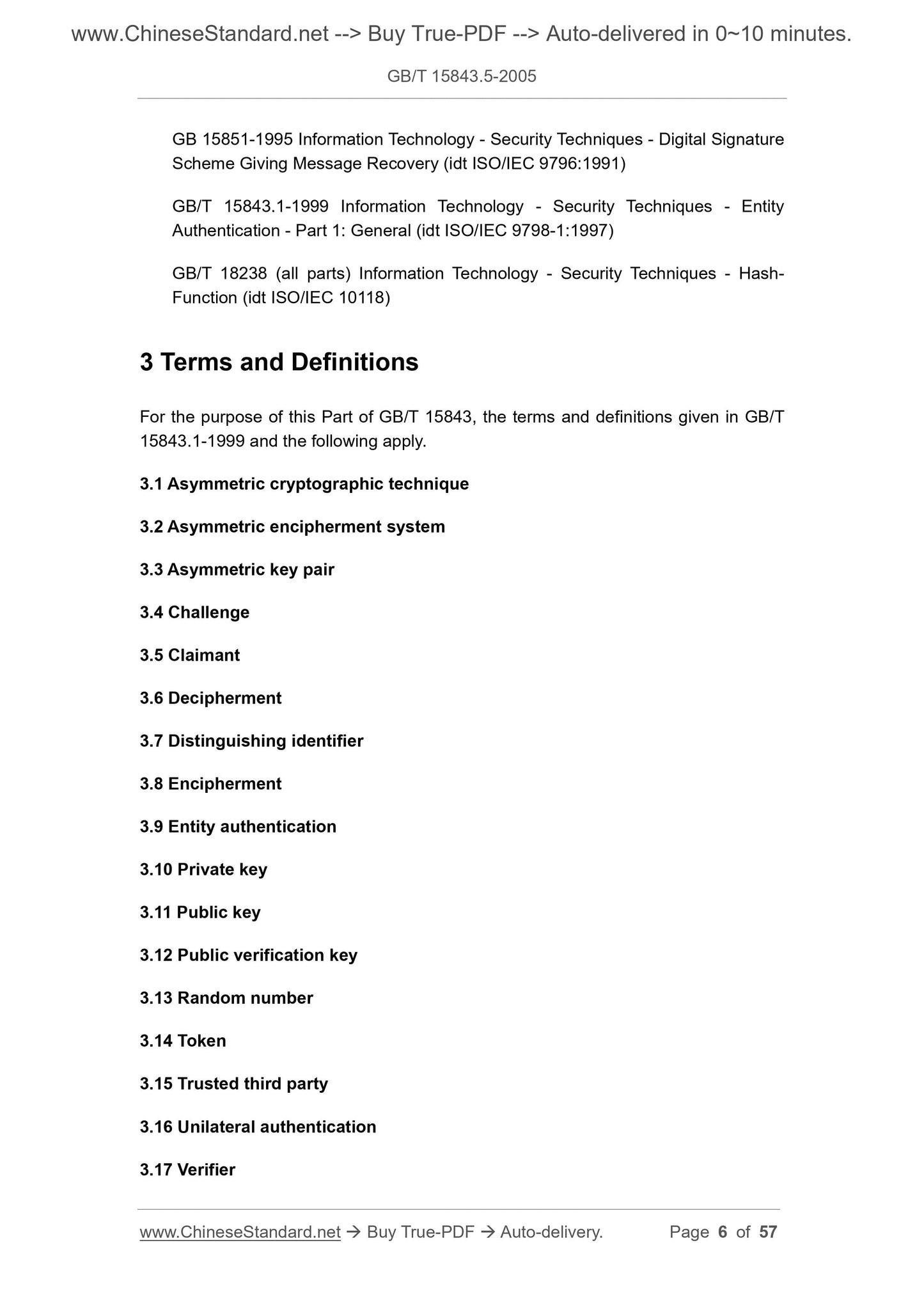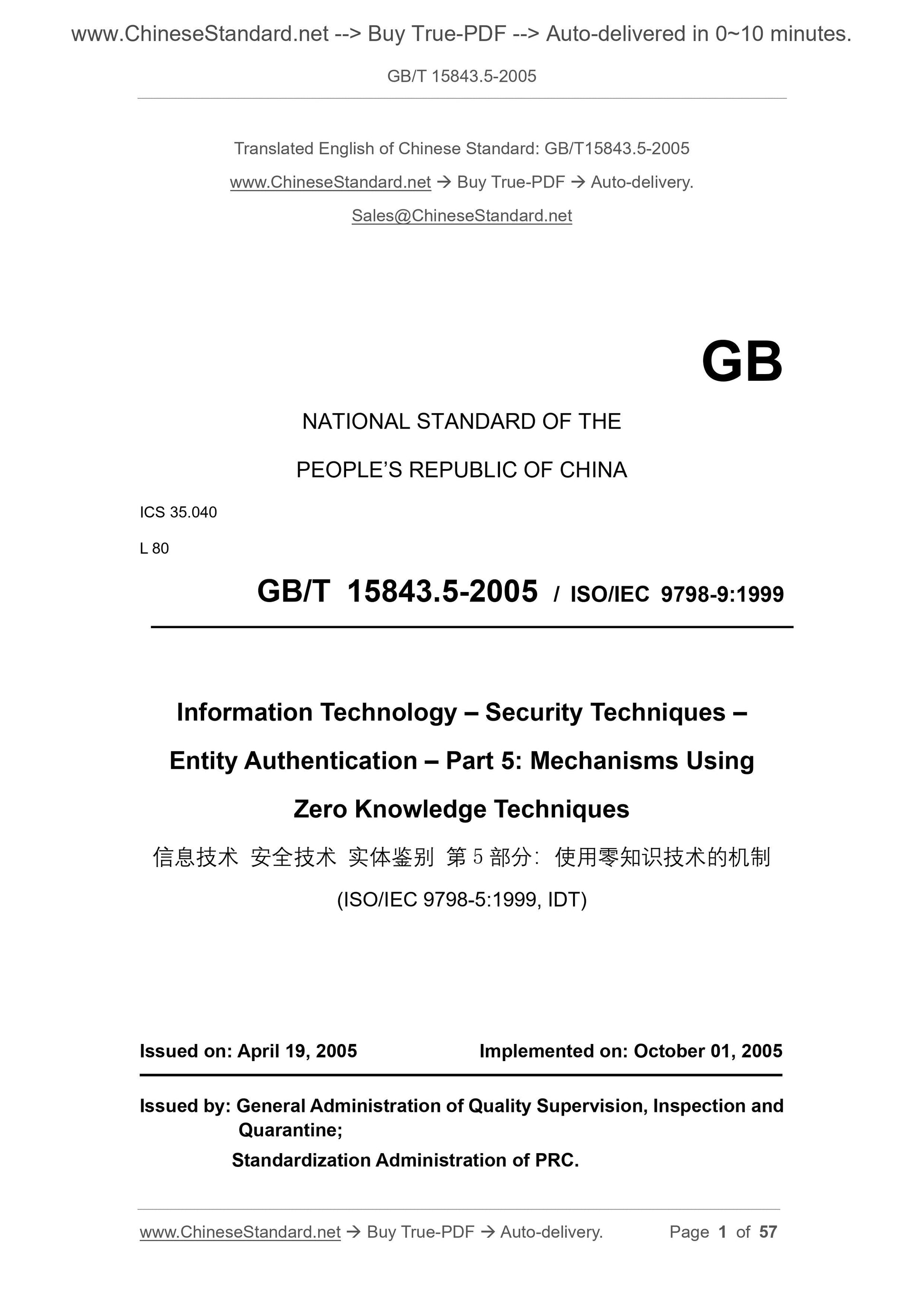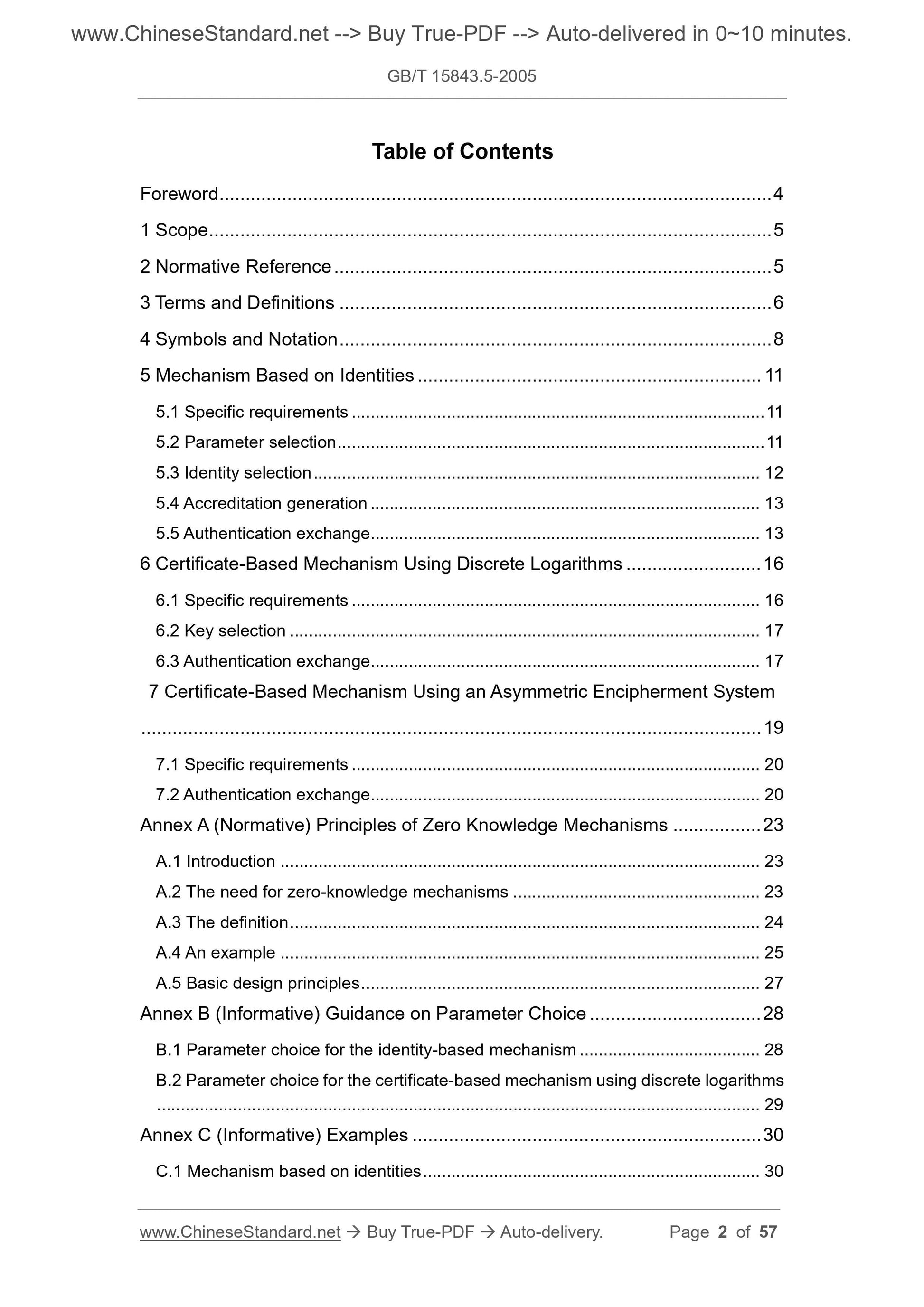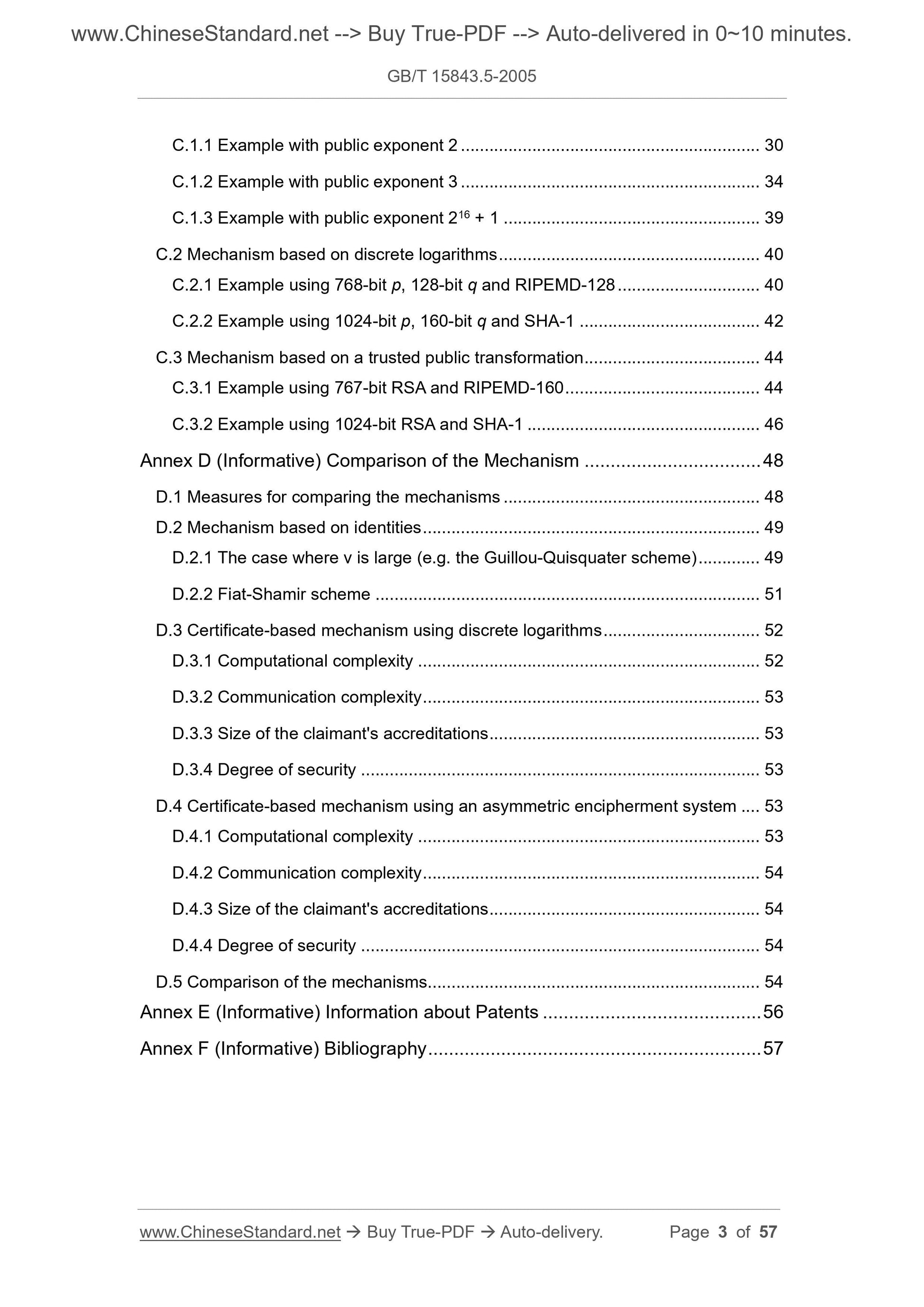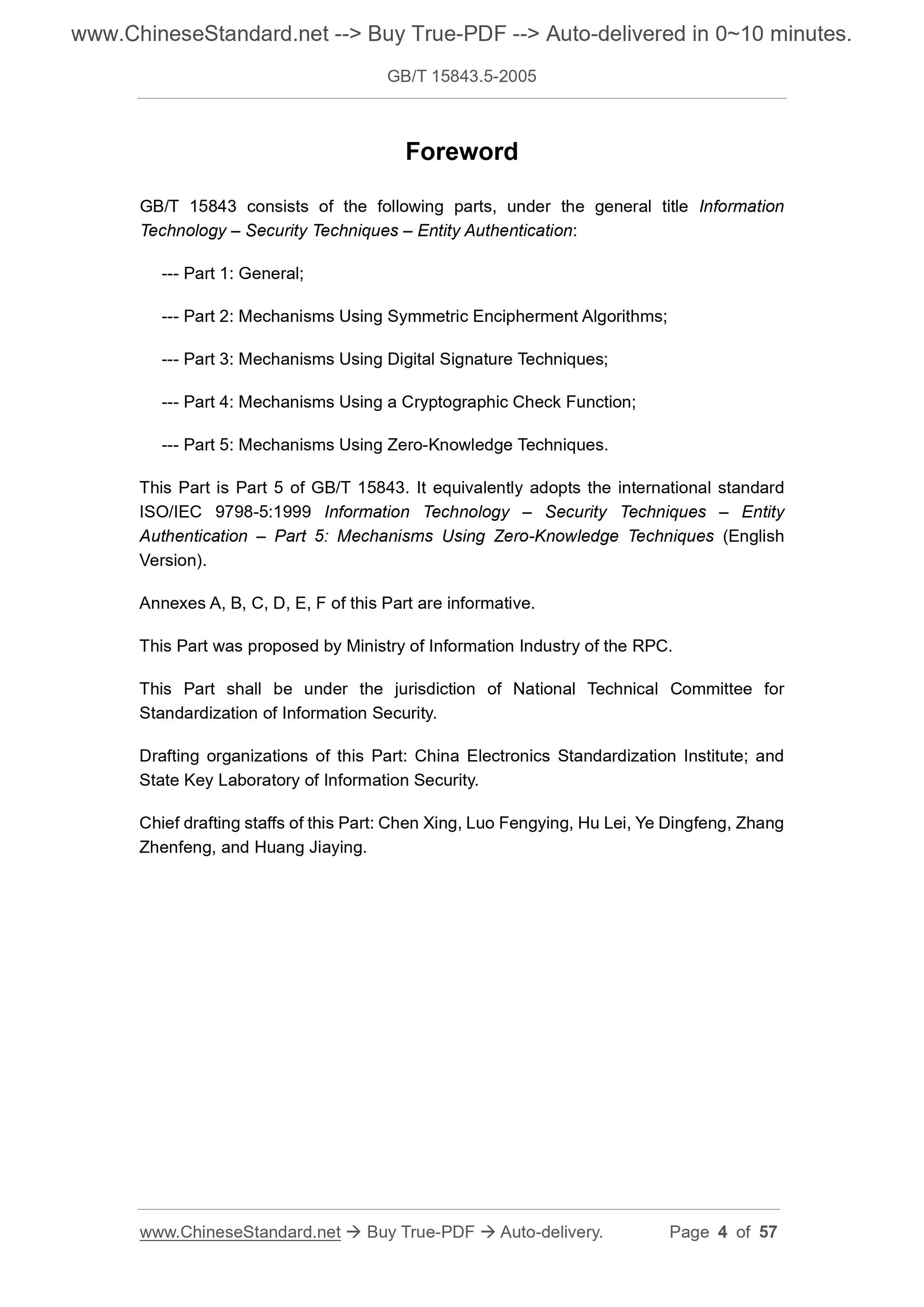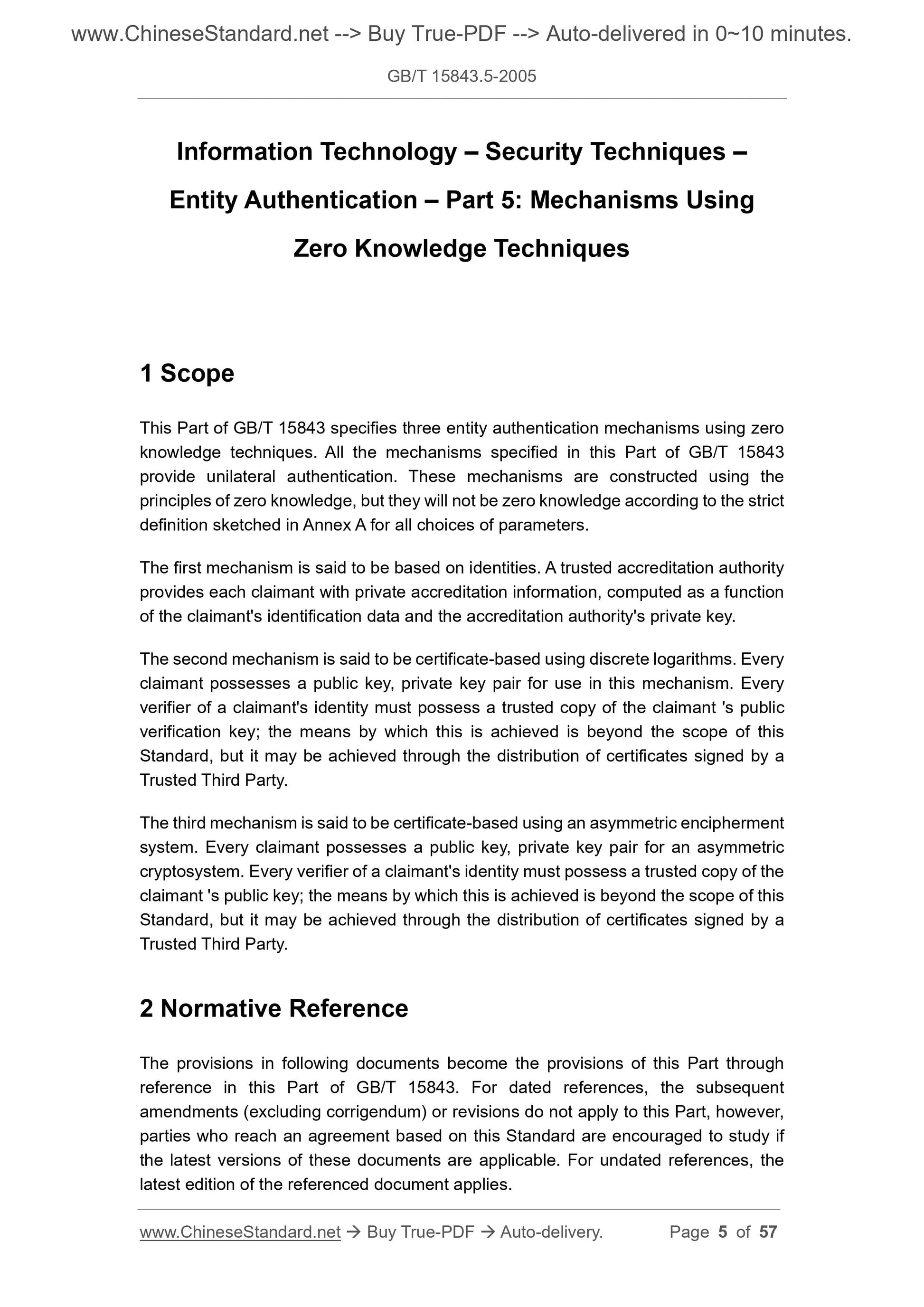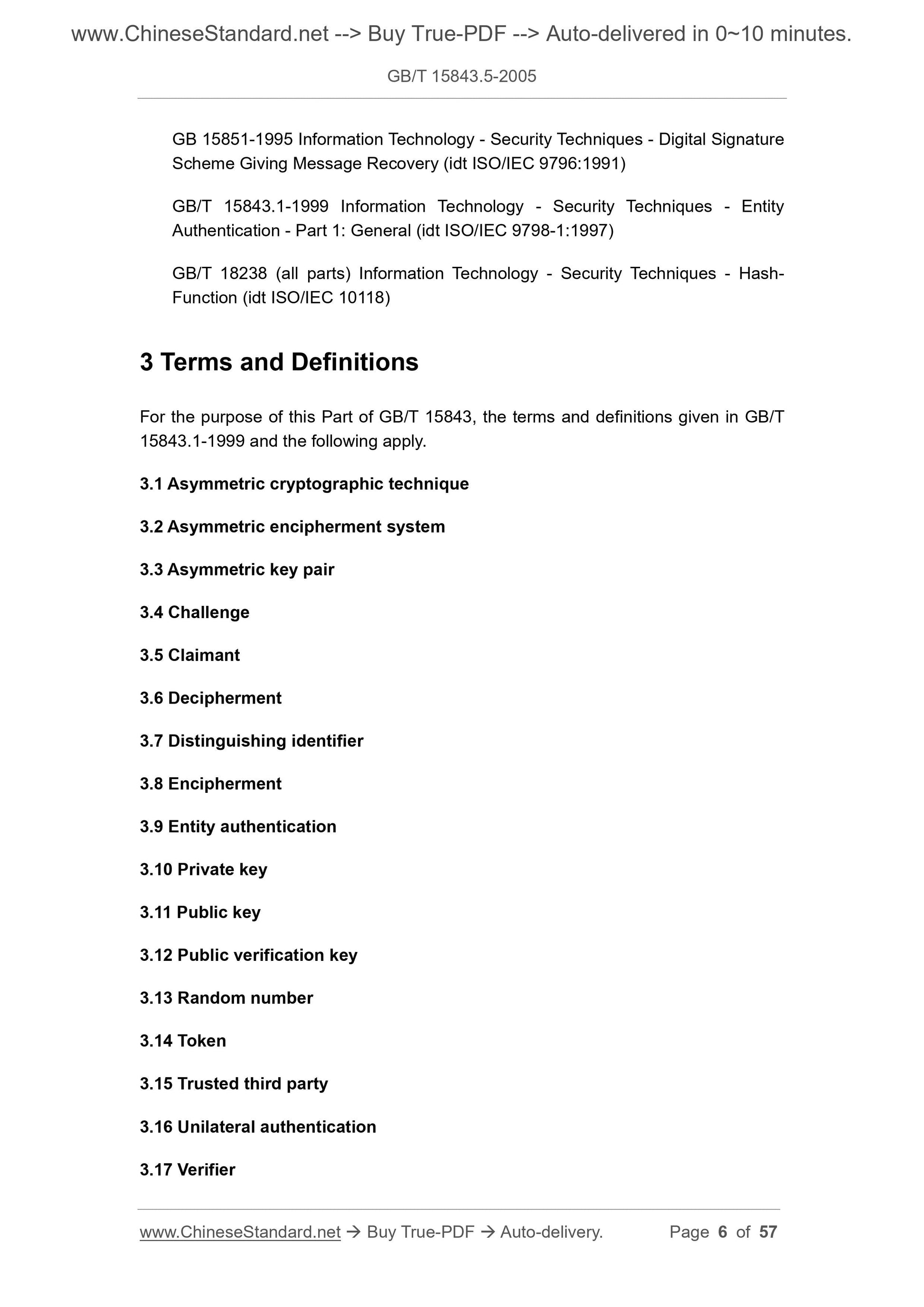1
/
of
6
www.ChineseStandard.us -- Field Test Asia Pte. Ltd.
GB/T 15843.5-2005 English PDF (GB/T15843.5-2005)
GB/T 15843.5-2005 English PDF (GB/T15843.5-2005)
Regular price
$270.00
Regular price
Sale price
$270.00
Unit price
/
per
Shipping calculated at checkout.
Couldn't load pickup availability
GB/T 15843.5-2005: Information technology -- Security technique -- Entity authentication -- Part 5: Mechanisms using zero knowledge techniques
Delivery: 9 seconds. Download (and Email) true-PDF + Invoice.Get Quotation: Click GB/T 15843.5-2005 (Self-service in 1-minute)
Newer / historical versions: GB/T 15843.5-2005
Preview True-PDF
Scope
This Part of GB/T 15843 specifies three entity authentication mechanisms using zeroknowledge techniques. All the mechanisms specified in this Part of GB/T 15843
provide unilateral authentication. These mechanisms are constructed using the
principles of zero knowledge, but they will not be zero knowledge according to the strict
definition sketched in Annex A for all choices of parameters.
The first mechanism is said to be based on identities. A trusted accreditation authority
provides each claimant with private accreditation information, computed as a function
of the claimant's identification data and the accreditation authority's private key.
The second mechanism is said to be certificate-based using discrete logarithms. Every
claimant possesses a public key, private key pair for use in this mechanism. Every
verifier of a claimant's identity must possess a trusted copy of the claimant 's public
verification key; the means by which this is achieved is beyond the scope of this
Standard, but it may be achieved through the distribution of certificates signed by a
Trusted Third Party.
The third mechanism is said to be certificate-based using an asymmetric encipherment
system. Every claimant possesses a public key, private key pair for an asymmetric
cryptosystem. Every verifier of a claimant's identity must possess a trusted copy of the
claimant 's public key; the means by which this is achieved is beyond the scope of this
Standard, but it may be achieved through the distribution of certificates signed by a
Trusted Third Party.
Basic Data
| Standard ID | GB/T 15843.5-2005 (GB/T15843.5-2005) |
| Description (Translated English) | Information technology. Security technique. Entity authentication. Part 5: Mechanisms using zero knowledge techniques |
| Sector / Industry | National Standard (Recommended) |
| Classification of Chinese Standard | L80 |
| Classification of International Standard | 35.040 |
| Word Count Estimation | 41,467 |
| Date of Issue | 2005-04-19 |
| Date of Implementation | 2005-10-01 |
| Adopted Standard | ISO/IEC 9798-5-1999, IDT |
| Regulation (derived from) | Announcement of Newly Approved National Standards No. 6, 2005 (No. 80 overall) |
| Issuing agency(ies) | General Administration of Quality Supervision, Inspection and Quarantine of the People Republic of China, China National Standardization Administration Committee |
| Summary | This standard specifies two kinds of zero- knowledge techniques used to buy body authentication mechanism. All in GB/T 15843 of this standard describes mechanisms offer one-way identification. These mechanisms apply the principle of zero-knowledge structure, but according to the strict definition in Appendix A, for all parameter selection, these mechanisms themselves are not zero-knowledge. The first mechanism is called identity-based mechanisms. Credible AIs for each approved claim proprietary information provided by the private information is recognized as claiming the identity of the data and the authorized institutions of the private key functions calculated. The second mechanism is called the discrete logarithm based on the use certificate-based mechanism. Every one who claimed to have one pair of this mechanism for public key and private key pair. Each claim must verify the identity of the person that owns the claims credible public verification key copy, their access methods is beyond the scope of this standard, but it can be a certificate signed by a trusted third party to obtain the distribution. The third mechanism is called asymmetric encryption system based on the use certificate-based mechanism. Every one who claimed to have one pair of asymmetric encryption system for public key and private key pair. Each claim must verify the identity of the person that owns the claims credible public verification key copy, their access methods is beyond the scope of this standard, but can be a certificate signed by a trusted third party to obtain the distribution. |
Share
